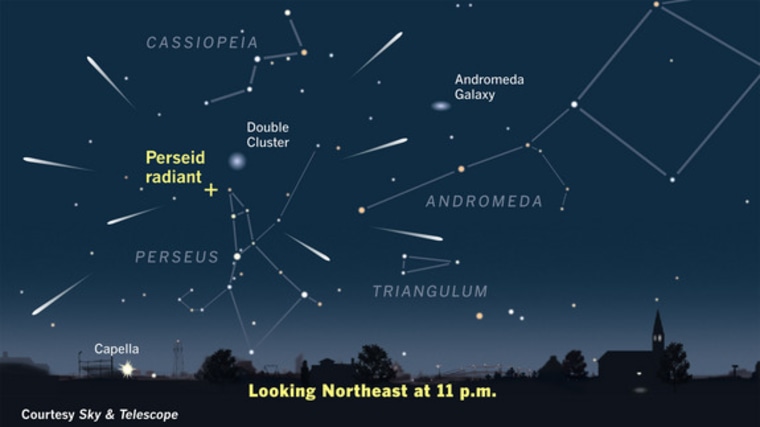The Perseid meteor shower is the most widely observed and dependable annual meteor display of the year, and its peak this week has all the earmarks of being an excellent example of celestial fireworks, weather permitting.
This year, the Perseids will peak in the overnight hours of Wednesday and Thursday (Aug. 12 and 13) just one day before the new moon. Unlike last year, when a brilliant and nearly full moon washed out all but the brightest meteors, 2015 should be a very opportune year for observing "shooting stars" with your own eyes or cameras. NASA released a video on how to see the 2015 Perseid meteor shower.
Another reason that the Perseids could put on a better-than-average show this year is an assist from the planet Jupiter. We'll explain why that is in moment. First, here is a primer about where famous meteors like the Perseidscome from. [Amazing Perseid Meteor Shower Photos from 2014]

Most meteor showers evolve from comets, and the Perseid meteor shower is no different. It is made of pieces of Comet Swift-Tuttle, a comet first discovered in 1862 that takes 133 years to make one trip around the sun. Comet Swift-Tuttle was last visible in the night sky in 1992 and won't return until 2126.
Comets are composed chiefly of frozen gases, but the meteoroids that are mixed in with that gas — bits and pieces that have flaked off from the comet’s nucleus — are very flimsy. When a comet nears the sun, its nucleus sheds clouds of rubble that spread out along its orbit, creating a continuous "river of dust" moving in the same direction as the comet. Each time Earth passes through one of these rivers, the planet gets a meteor shower.
The Perseid meteor shower debris stream intersects the orbit of Earth more or less directly, but on its way in toward the sun it also passes other planets. In the case of the most massive planet in the solar system, Jupiter, there is no direct encounter; the dross of Comet Swift-Tuttle passes well above this giant world, never coming any closer than about 160 million miles (257 million km) at 11.8-year intervals, the time it takes Jupiter to make a complete orbit around the sun.
But on those occasions when the planet is passing closest to Swift-Tuttle's river of dust, Jupiter's powerful gravitational field can still slightly perturb the comet particles, just enough to nudge them closer to the Earth. The result is usually an enhanced Perseid display, producing more than the usual complement of meteors.
Most years when the Earth encounters the Perseids, observers blessed with a very dark, clear sky might count as many as 90 meteors per hour (if you live in an area where haze, smoke and bright city lights are common, you will likely see a lot less).
When Jupiter has had an influence on the Perseid orbit, the meteor numbers tend to ramp up to above-normal levels. As it turns out, Jupiter recently passed closest to the orbit of Comet Swift-Tuttle in November 2014. It then takes another 22 months for the meteoroid stream affected by Jupiter to arrive in the vicinity of the Earth.
This means that the Perseid meteor shower of 2016 could offer an unusually amazing display of numerous meteors. This so-called "Jupiter effect" is so pronounced that years immediately flanking its peak can also see higher than normal meteor rates.
And 2015 is one of those years.
This is a condensed version of a report from Space.com. Read the full report. Joe Rao serves as an instructor and guest lecturer at New York's Hayden Planetarium. He writes about astronomy for Natural History magazine, the Farmer's Almanac and other publications, and he is also an on-camera meteorologist for News 12 Westchester, N.Y. Follow Space.com @Spacedotcom, Facebook and Google+.
More from Space.com:
- Top 10 Perseid Meteor Shower Facts
- Meteor Shower Quiz: How Well Do You Know 'Shooting Stars'?
- Great Perseid Meteors Expected August 12-13 (Dark Moon) | NASA Video
- Photos: Amazing Perseid Meteor Shower Displays
Copyright 2015 SPACE.com, a Purch company. All rights reserved. This material may not be published, broadcast, rewritten or redistributed.